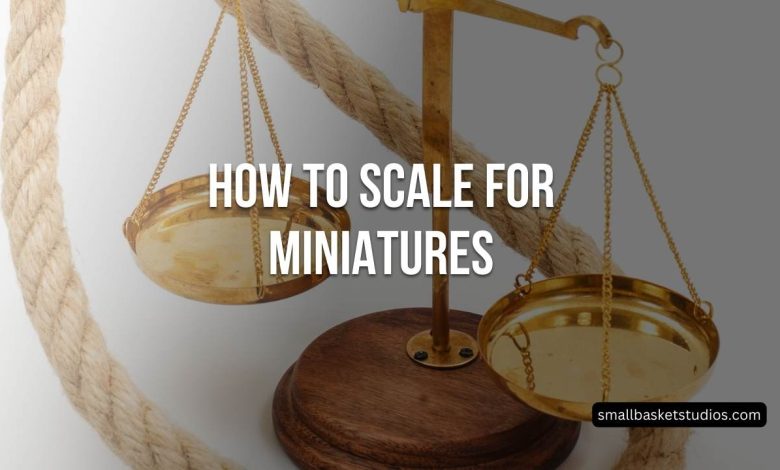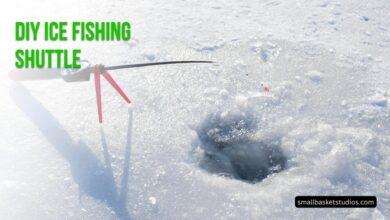How To Scale For Miniatures?

It’s all about the details in miniature land. Whether you’re a hobbyist, model making professional or serious gamer, an excellently understood scaling can be the difference between your creation looking bad-ass and its lacklustre cousin.
Scaling isn’t a science, it’s an art… that requires maths and precision…and probably anatomy too? In this complete guide, we’ll explore the complexities and vital understanding of scaling to give you the very best know how in order to take your miniature endeavours further than before.
Scaling Fundamentals: Understanding the Basics
Before we dive into the specifics of scaling for miniatures, it’s essential to grasp the foundational concepts. Scaling, in its simplest form, refers to the process of adjusting the size of an object while preserving its proportions and details. In the world of miniatures, this involves shrinking or enlarging a subject to a desired scale, often expressed as a ratio like 1:72 or 1:35. Accurate scaling is crucial for capturing the essence of the subject.
Scaling miniatures requires both precision and imagination. Whether recreating a historical structure or fantastical creature, getting the scale just right is vital for achieving believability. Too large and the miniature loses its impact, too small and details are missed. An apt scale allows even the finest features to shine through. For the miniature builder, scaling calls for equal parts technical skill and artistic vision to bring the original subject to life in micro form.
Determining the Appropriate Scale
One of the primary considerations when constructing miniatures is determining the proper scale for a given project. The intended use, available dimensions, and individual preferences often influence this consequential decision. For example, miniatures crafted for tabletop wargaming or dioramas may necessitate a specific scale to comfortably fit the designated play area or showcase.
It is imperative to contemplate the level of intricacy desired when opting for a scale. Smaller gauges, such as 1:72 or 1:87, may compromise fine details for overall compactness, whereas more expansive scales including 1:35 or 1:24 permit heightened authenticity and finesse but mandate more space and materials. Alternatively, an intermediate scale such as 1:50 can strike a reasonable balance between scale and detail for many applications.
Advanced Scaling Techniques
While basic scaling can be achieved through simple mathematical calculations, advanced techniques can elevate your miniature creations to new levels of realism and accuracy. Here are some essential techniques to master:
- Orthographic Projection: This method involves creating scaled drawings or plans from multiple viewpoints (top, front, side) to accurately represent the subject’s dimensions and proportions.
- 3D Modeling and Printing: With the advent of 3D modeling software and 3D printing technology, scaling for miniatures has become more accessible and precise. You can create digital models, scale them to the desired size, and print them using specialized 3D printers.
- Photogrammetry: This technique utilizes photographs of a subject taken from various angles to create a detailed 3D model. This model can then be scaled and used as a reference or even 3D printed.
- Master Patterns and Mold Making: For complex or organic shapes, creating a master pattern or mold can be invaluable. These patterns or molds can be scaled down or up to produce accurate miniature replicas.
Materials and Tools for Scaling
Scaling for miniatures often requires specialized materials and tools to achieve the desired level of precision and detail. Here are some essential items to consider:
- Precision measuring tools (calipers, rulers, micrometers)
- Scaling software (CAD programs, 3D modeling tools)
- High-resolution printers or 3D printers
- Sculpting tools (files, knives, loop tools)
- Molding and casting materials (silicone, resin, plaster)
By having the right tools and materials at your disposal, you’ll be better equipped to tackle even the most intricate scaling challenges.
Scale Modeling Techniques
Once you’ve mastered the art of scaling, it’s time to bring your miniatures to life. Scale modeling techniques play a crucial role in creating realistic and visually striking miniatures. Here are some essential techniques to explore:
- Detailing and Weathering: Adding fine details and simulating weathering effects can significantly enhance the realism and authenticity of your miniatures. Techniques like dry brushing, washes, and pigment applications can help achieve a sense of age and wear.
- Texturing: Replicating surface textures, such as wood grain, stone, or metallic finishes, is essential for creating convincing miniatures. Various materials and tools can be used to achieve these effects, including specialized texture stamps, sculpting tools, and even household items.
- Lighting and Dioramas: Incorporating appropriate lighting and creating detailed dioramas can transform your miniatures into immersive scenes. Careful consideration of lighting angles, shadows, and environmental elements can bring your miniature worlds to life.
- Painting and Finishing: The final step in creating stunning miniatures is often the most challenging – painting and finishing. Mastering techniques like layering, blending, and glazing can elevate your miniatures to new levels of realism and vibrancy.
Case Studies and Examples
To better illustrate the principles and techniques discussed, let’s explore a few case studies and examples of successful scaling for miniatures:
- Historical Architecture: Imagine recreating a famous landmark, such as the Taj Mahal or the Colosseum, in miniature form. Accurate scaling and attention to detail are essential to capturing the grandeur and intricacies of these iconic structures.
- Sci-Fi and Fantasy Creatures: From dragons to alien lifeforms, scaling for miniatures in the realms of science fiction and fantasy presents unique challenges. Achieving the perfect balance between realism and imagination is key to creating captivating and believable miniatures.
- Vehicle Modeling: Whether you’re recreating a classic automobile, a modern sports car, or a futuristic spacecraft, scaling for miniatures in the automotive and transportation realm requires a deep understanding of proportions, curves, and intricate details.
By studying these examples and the work of skilled miniature artists, you’ll gain valuable insights and inspiration for your own projects.
Frequently Asked Questions (FAQ)
Can I scale miniatures without specialized tools or software?
While specialized tools and software can greatly facilitate the scaling process, it is possible to scale miniatures using more traditional methods. Basic measuring tools, ruler, and careful calculations can still produce satisfactory results, especially for simpler subjects or smaller scales.
Is it better to scale up or down?
The decision to scale up or down depends on the specific project and desired outcome. Scaling down (miniaturizing) is often preferred for creating detailed representations of larger subjects, while scaling up can be useful for enhancing intricate details or creating larger-than-life models.
How important is the choice of materials when scaling for miniatures?
The choice of materials is crucial when scaling for miniatures. Different materials have varying properties and behave differently when scaled. For example, some materials may become brittle or lose detail when scaled down, while others may not hold their shape when scaled up. Selecting the appropriate materials can significantly impact the final result.
Can I use 3D printing for scaling miniatures?
Absolutely! 3D printing has revolutionized the world of miniature modeling, offering unparalleled precision and flexibility in scaling. With the ability to create digital 3D models and print them at various scales, 3D printing has become a valuable tool for miniature enthusiasts and professionals alike.
What are some common challenges faced when scaling for miniatures?
Some common challenges include maintaining accurate proportions, preserving intricate details, achieving realistic textures and finishes, and creating seamless transitions between different materials or components. Additionally, working with very small or very large scales can present unique difficulties in terms of handling and precision.
Conclusion
Scaling for miniatures is a delicate endeavor requiring both technical prowess and creative flair. Mastering the principles and techniques outlined herein will equip you to embark on transportive miniature projects accurately capturing the essence of their subjects with stunning realism.
Remember, scaling is not merely measurements and math; it’s expressing the soul and character of that which is scaled, regardless of size. With diligence and practice, one develops a discerning eye for proportions and the ability to bring even the most intricate details to life in miniature form.
As your skills in scaling for miniatures continue to sharpen, embrace challenges and revel in the sense of accomplishment from crafting breathtaking miniature worlds. Whether hobbyist, professional or simply passionate about the intricate and extraordinary, the art of scaling for miniatures opens a world of boundless possibilities and creative expression.




